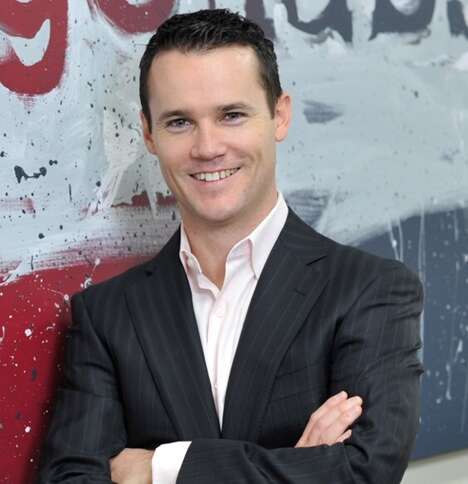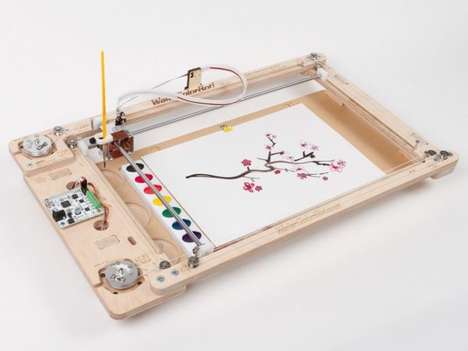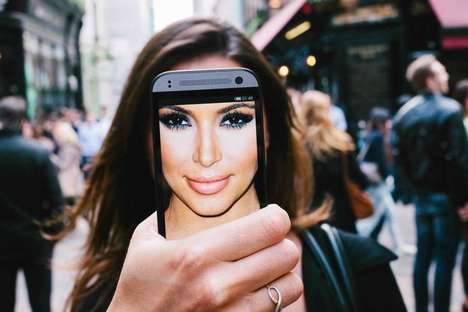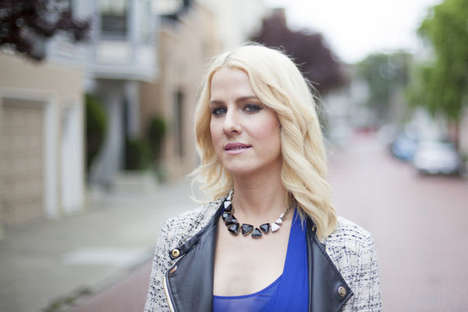Recognizing the Edge of Disruption
Peter Sheahan, Innovation Expert & CEO of ChangeLabs
Related Trend Reports
Branding, Business, Celebs, Charity, Fashion, Gadgets, Lifestyle, Market, Marketing, New Ventures, Photography, Pop Culture, Retail, Social Business, Tech If you want to learn how to break away from complacency, spark change and revolutionize the way you innovate, Peter Sheahan is the man you want consulting you. Sheahan is the CEO and founder of ChangeLabs, a global firm that improves a brand’s performance and innovation. He is the author of several books including Generation Y, FL!P and Making it Happen and an advisor to dozens of top-tier brands including Ogilvy, Microsoft and Google with a mission to push positive behavioral changes to get brands innovating.
If you want to learn how to break away from complacency, spark change and revolutionize the way you innovate, Peter Sheahan is the man you want consulting you. Sheahan is the CEO and founder of ChangeLabs, a global firm that improves a brand’s performance and innovation. He is the author of several books including Generation Y, FL!P and Making it Happen and an advisor to dozens of top-tier brands including Ogilvy, Microsoft and Google with a mission to push positive behavioral changes to get brands innovating. 3 Questions with Peter Sheahan:
1. What is the biggest challenge you face when innovating, or helping others innovate?
I think there are four real obstacles that we find personally difficult to overcome, but that our clients do as well and the first is vested interest. One of the reasons people resist innovation is that the model they’ve got works—it either delivers profit, identity, progress or gain—and there’s some payoff in the current approach in the status quo. Their vested interest in preserving that gets in their way of an openness to anything else. It also creates a desire for them not to go there themselves and to also potentially block others as well.
Two is legacy business models. One of the great myths of people that don’t really understand business that well is that they think it’s about having good ideas. Generally, that’s not true—the world is not short of good ideas, it is short of good ideas that are scalable—[ideas] that people know how to execute and you can make money on. I think we often confuse creativity and innovation and they’re not the same thing; innovation is some shift in how we do things or what we do that creates net value that wouldn’t otherwise exist. An existing business model can often get in the way of that as well.
Three is conditioned assumptions and beliefs. What has made people successful today brings with it a whole set of biases, assumptions and beliefs they have about how business works, how markets work or about what incentivizes or motivates a buyer and they tend to stick to those conditioned beliefs. What they fail to recognize, however, is that in doing so they’re making an assumption that the world will continue to operate the way it has—that technology won’t disrupt it and expectations won’t change.
The fourth is confirmation bias and that’s this idea that everyone thinks everyone is just like them. So if they wouldn’t engage with a service in that way or they wouldn’t place economic value on “insert product here,” then no one else would. What they tend to do is take their world view and project it on everyone else on the planet and that’s generally not true.
2. You aim to provoke individuals to think about how to embrace change and find the innovation within it. What do you recommend to individuals who want to take a good idea they have to the next level?
The reason you’d want to see change and disruption as a good thing is because that’s where the margin is. The number one complaint most organizations and most for-profit organizations have today is that they feel commoditized. Their competitive environment, the procurement, the role of procurement and the level of substitution available in the market means we’re getting squeezed on price which means we’re getting squeezed on margin. People are constantly looking for a difference. We’ve spent the last five years studying what it takes to differentiate a commoditized market and there’s no way around it—you have to create more value, period. Either you’re creating more value than the next product or service or you’re not.
The more value is created on the edge of disruption. Where is the edge of disruption? In those areas closest enough to the business that stands right now that the client, buyer or the customer can see the opportunity but doesn’t know how to exploit it. Not many people can help a consumer engage in that behavior change for instance or that company to exploit that new market opportunity. If you know how to do that, you’re right at the edge of disruption and you’re in [a] highly complex environment which means not a lot of people can solve for that problem which, [in turn,] means there’s a lot more margin.
Economic strides the need to move to that edge, but you have to be able to create scalable business models when you get there.
Test the idea. We have a fundamental belief at ChangeLabs that action precedes clarity. We’ve learned that from our own journey where we’ve spent months developing product, take it to market and within three pitches we know there’s a better way to do it and create the same outcome with a different import. If we had only tested it in the first week of development—even if it was just conceptual—we would have known that very quickly. We have a methodology as a firm for doing that with very large corporations.
[Then,] take your learnings and embed them into what you’re doing then refine, refine, refine and finally scale what works.
3. Where do you think the future of innovation is heading?
I think there are three areas where people are finding new value. Number one is non-sexy innovation. I think there’s as much breakthrough to be found in changing how we do what we do than what we do.
[Second is a] value chain solution and starting to see the customer as an ecosystem not as an isolated individual and then starting to see your value chain within the lens of other value chains. This more collaborative approach to innovation is going to continue to emerge where people take a more holistic view and lens of the client.
Third is disruptive innovation. The question is, what does disruptive innovation look like? In our experience [at ChangeLabs] there are very few innovations we see as being ultimately revolutionary. What we mean by that is where someone comes up with a completely brand new approach or product that no one could have possibly thought of before. Almost all [innovations] are evolutionary—they’re iterated in some way, shape or form… What makes it so disruptive is the convergence of other technologies.
References: petersheahan, changelabs.net
Featured Articles

Crowdlending Creativity
Crowdfunding is overtaken by niche artistic endeavors

Branded Selfie
Brands are embracing and heightening the selfie phenomenon to an art form

Responsive Retail
Beacon technology is creating a more interactive, streamlined retail experience

Motion Branding
Consumers are responding to fashion marketing that highlights products in motion

Crowdsourced Philanthropy
Seeking funding, social good enterprises turn to crowdlending techniques

Equality Marketing
Campaigns focused on achieving equality appeal to female consumers

Mainstream Micro-Lending
Charities take a backseat to doing social good through microloans

Niche Crowdfunding
Crowdlending sites help give a voice to niche enterprises and causes

Automated Donation
Organizations use technology to integrate social good into a daily routine